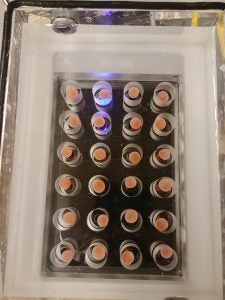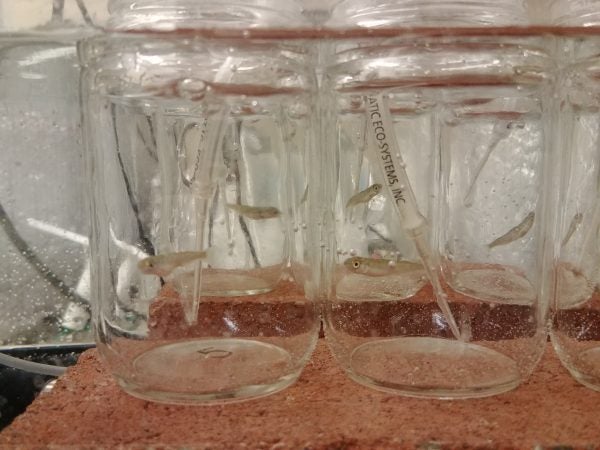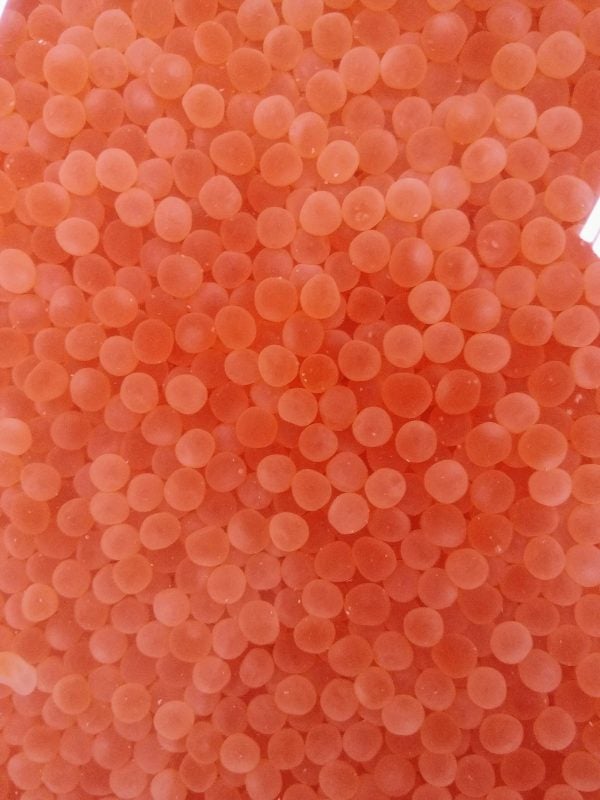Global climate change is predicted to drastically alter aquatic environments within the next 90 years through changes in temperature, acidity, salinity, oxygen levels and food availability, sea level rise and invasion of non-native species. Combined with other human-caused disturbances to aquatic environments, California’s native species and aquatic resources will be under immense pressure in the coming decades. Essential to our ability to predict how California’s species will fare in the face of climate change is an understanding of the physiological mechanisms these organisms use to respond to multiple stressors (both abiotic and biotic) and what environmental conditions push animals beyond their physiological limits, ultimately affecting their ability to survive under future conditions.
Research efforts focus on two central themes:
1. Physiological capacity of wild aquatic species (both fishes and invertebrates) to tolerate the multiple drivers of environmental change associated with climate change
2. Assessment of the relative differences in vulnerability of species across different life history stages to multiple stressors
Research integrates molecular, cellular and organismal approaches within a “real world” context. Animals in nature rarely see single stressors in isolation and therefore factorial experiments will be designed to examine the physiological response of organisms to multiple drivers of change. Stressors used in experiments will be relevant in space and time to natural conditions in the wild, and those predicted by climate change scenarios. Research in our lab takes a comparative approach and examines the diversity of molecular, biochemical and physiological strategies used by wide variety of species (e.g. fishes, crabs, oysters, mussels, snails) to better understand the mechanistic underpinnings defining resilience to stressors and community-level impacts of climate change to a system. Taken together, this general integrative, comparative and multiple stressor approach provides much need insight into the mechanisms that animals use to cope with environmental variation at a variety of temporal and spatial scales as a way to assess the potential of animals to acclimate and/or adapt to novel changes in their environment.
Recent projects:
Chinook Salmon
Responses to Multiple stressors
California is home to four distinct runs of Chinook salmon. Conservation efforts for salmon typically focus on maintaining water temperatures within a tolerable range, but there are many stressors in addition to warming that can affect salmon. Our research focuses on early life stage salmon from embryos to fry. We are studying how warming and hypoxia (low oxygen) affect the survival, development, and physiological performance of salmon as individual and combined stressors. We are examining the interaction between these stressors from the cellular to whole organism level. While we typically conduct these experiments in the laboratory, we are also studying salmon development and environmental stressors in the field.
Learn more about current field research here:
Influence of thiamine deficiency on physiological responses
For the first time ever, symptoms of thiamine deficiency complex (TDC) in California Chinook salmon emerged throughout hatcheries in 2020. Egg and fry showed high mortality rates as well as unusual behavior such as lethargy and spiral swimming. Upon further investigation, it was linked to low thiamine levels in adult spawning females. But what caused this sudden change? A shift in prey fish consumed by the adults, resulting in changes in nutrition. Anchovies were found to be the dominant prey fish in the stomach contents of adult salmon. However, anchovies are high in thiaminase, an enzyme that breaks down thiamine. Because female adults consumed significant amounts of anchovies, their thiamine levels decreased, resulting in the young receiving deficient levels of thiamine. Because this is an extremely new phenomenon, there are many questions on how TDC affects an individual’s response to environmental changes. Currently, our research is focusing on thiamine deficient juvenile Chinook salmon and their responses to thermal stressors by examining heat shock protein 70 expression through Western Blotting.
Publications
Del Rio, A. M., Mukai, G. N., Martin, B. T., Johnson, R. C., Fangue, N. A., Israel, J. A., & Todgham, A. E. (2021). Differential sensitivity to warming and hypoxia during development and long-term effects of developmental exposure in early life stage Chinook salmon. Conservation physiology, 9(1), coab054
Davis, B.E., Hansen, M.J., Cocherell, D.E., Nguyen, T.X., Sommer, T., Baxter, R.D., Fangue, N.A., Todgham, A.E. 2019. Consequences of constant, not fluctuating warming on swimming activity, group structure, and predation of endangered Delta smelt. Freshwater Biology.
Davis, B.E., Cocherell, D.E., Sommer, T., Baxter, R.D., Hung, T., Todgham, A.E., and Fangue, N.A. 2019. Sensitivities of an endemic, endangered California smelt and two non-native fishes to serial increases in temperature and salinity: implications for shifting community structure with climate change. Cons Physiol 7(1): coy076: doi:10.1093/conphys/coy076.
Del Rio, A.M., Davis, B.E., Fangue, N.A., and Todgham, A.E. 2019. Combined effects of warming and hypoxia on early life stage Chinook salmon physiology and development. Cons Physiol 7(1): coy078: doi:10.1093/conphys/coy078.
Chase, D.A. and Todgham, A.E. Effects of social interactions on the growth and cortisol levels of three species of juvenile California estuarine fish. Transactions of the American Fisheries Society. (In Press)
McLean and Todgham 2015. Effect of food availability on the growth and thermal physiology of juvenile Dungeness crabs (Metacarcinus magister).
Cheng et al. 2015. Testing local and global stressor impacts on a coastal foundation species using an ecologically realistic framework.
Bjelde et al. 2015. The role of oxygen in determining upper thermal limits in Lottia digitalis under air exposure and submersion.
Bjelde and Todgham 2013. Thermal physiology of the fingered limpet Lottia digitalis under emersion and immersion.


